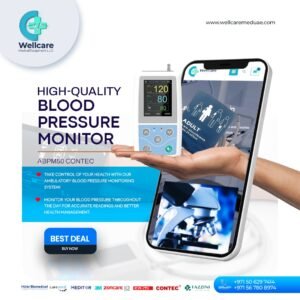Defibrillator Equipment supplier in Sudan
Defibrillator equipment holds immense significance in Sudan, serving as a critical component in enhancing the country's healthcare system. These life-saving devices are essential for immediate intervention during cardiac arrest, significantly improving survival rates and reducing fatalities. By equipping hospitals, clinics, and public spaces with defibrillators, Sudan can ensure that medical professionals and even bystanders are prepared to respond swiftly to cardiac emergencies. This not only strengthens emergency medical services but also fosters a sense of community preparedness and safety. In rural and remote areas, where access to advanced medical facilities is limited, defibrillators provide a crucial lifeline, promoting equitable healthcare across the nation. The availability of defibrillators also aligns with international healthcare standards, boosting the credibility and reliability of Sudanese healthcare facilities. Furthermore, the integration of modern defibrillators with advanced features such as automated prompts and real-time feedback enhances the effectiveness of emergency interventions, while training programs for healthcare providers and the public increase awareness and preparedness. These efforts support various health initiatives by the government and non-governmental organizations, aimed at reducing cardiovascular disease mortality rates. Economically, defibrillators contribute to cost savings by preventing long-term healthcare expenses associated with cardiac events and maintaining workforce productivity by ensuring timely medical intervention. Overall, the significance of defibrillator equipment in Sudan lies in its ability to save lives, improve healthcare quality, promote equity, and support broader public health and economic goals.
Defibrillator equipment in Sudan is an essential component of the country’s healthcare infrastructure, especially for managing cardiac emergencies. Here are some trends and key aspects related to defibrillator equipment in Sudan:
1. Increasing Demand and Usage
- Growing Awareness: There is a rising awareness about the importance of defibrillators in saving lives during cardiac arrest. This has led to increased demand in hospitals, clinics, and public places.
- Healthcare Initiatives: Various healthcare initiatives and programs by both government and non-governmental organizations aim to equip medical facilities with defibrillators.
2. Government and NGO Involvement
- Government Policies: The Sudanese government is working on improving healthcare infrastructure, which includes the provision of critical medical equipment like defibrillators.
- NGO Contributions: Non-governmental organizations play a crucial role in supplying defibrillators to under-resourced areas, often through donations and healthcare projects.
3. Training and Education
- Professional Training: There is a growing emphasis on training healthcare professionals in the use of defibrillators to ensure effective emergency response.
- Community Programs: Community training programs are being implemented to educate the public on basic life support and the use of Automated External Defibrillators (AEDs).
4. Technological Advancements
- Modern Defibrillators: The adoption of modern, automated, and user-friendly defibrillators is on the rise. These devices often come with features such as voice prompts, real-time feedback, and remote monitoring capabilities.
- Integration with Mobile Technology: Some defibrillators are now integrated with mobile apps and cloud systems for better tracking and maintenance.
5. Challenges
- Resource Constraints: Despite the demand, resource constraints pose a significant challenge. Many healthcare facilities in remote or rural areas still lack access to defibrillators.
- Maintenance and Sustainability: Ensuring the maintenance and sustainability of defibrillator equipment is a challenge due to the lack of technical expertise and financial resources.
6. Market Trends
- Imports and Local Suppliers: The market for defibrillators in Sudan is primarily driven by imports, with a few local suppliers and distributors providing equipment and maintenance services.
- Collaboration with International Brands: Collaborations with international medical equipment brands help in bringing advanced defibrillators to the Sudanese market.
7. Future Outlook
- Expanding Coverage: Efforts are being made to expand the coverage of defibrillators in both urban and rural areas.
- Improved Training Programs: Enhanced training programs for healthcare professionals and the public are expected to improve the effective use of defibrillators.
- Policy Support: Continued support from government policies and international aid is crucial for the sustained availability and use of defibrillators.
In summary, while there are challenges, the trends in defibrillator equipment in Sudan show positive growth driven by increasing awareness, government and NGO efforts, technological advancements, and expanding training programs.




